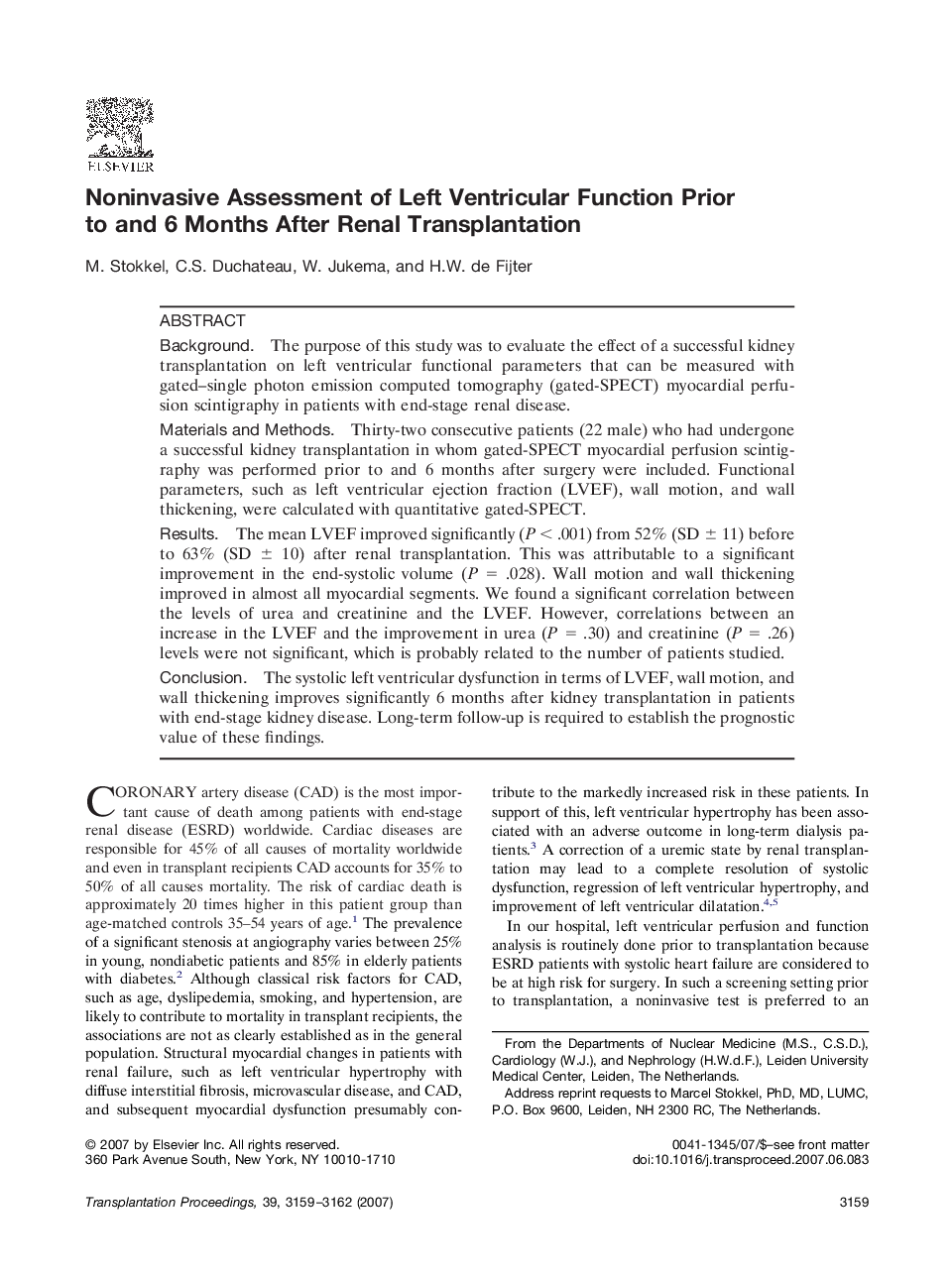| Article ID | Journal | Published Year | Pages | File Type |
|---|---|---|---|---|
| 4262745 | Transplantation Proceedings | 2007 | 4 Pages |
BackgroundThe purpose of this study was to evaluate the effect of a successful kidney transplantation on left ventricular functional parameters that can be measured with gated–single photon emission computed tomography (gated-SPECT) myocardial perfusion scintigraphy in patients with end-stage renal disease.Materials and MethodsThirty-two consecutive patients (22 male) who had undergone a successful kidney transplantation in whom gated-SPECT myocardial perfusion scintigraphy was performed prior to and 6 months after surgery were included. Functional parameters, such as left ventricular ejection fraction (LVEF), wall motion, and wall thickening, were calculated with quantitative gated-SPECT.ResultsThe mean LVEF improved significantly (P < .001) from 52% (SD ± 11) before to 63% (SD ± 10) after renal transplantation. This was attributable to a significant improvement in the end-systolic volume (P = .028). Wall motion and wall thickening improved in almost all myocardial segments. We found a significant correlation between the levels of urea and creatinine and the LVEF. However, correlations between an increase in the LVEF and the improvement in urea (P = .30) and creatinine (P = .26) levels were not significant, which is probably related to the number of patients studied.ConclusionThe systolic left ventricular dysfunction in terms of LVEF, wall motion, and wall thickening improves significantly 6 months after kidney transplantation in patients with end-stage kidney disease. Long-term follow-up is required to establish the prognostic value of these findings.
